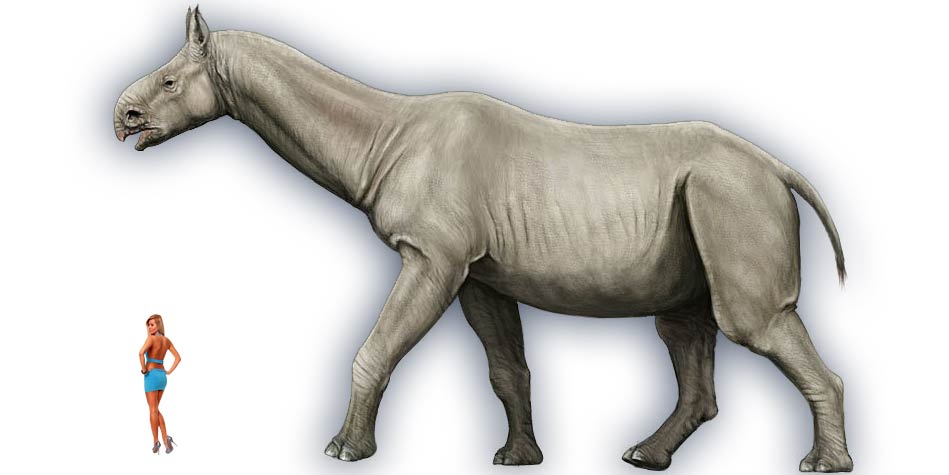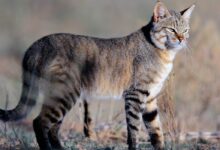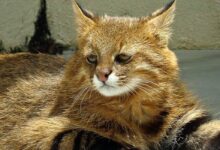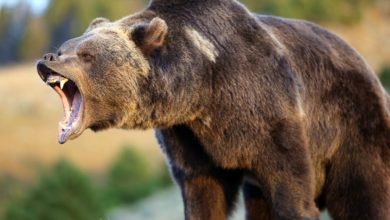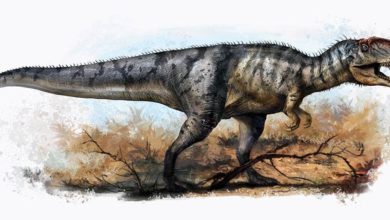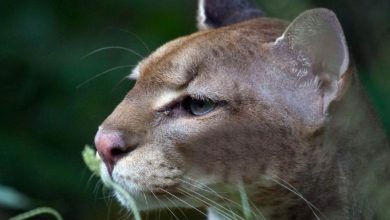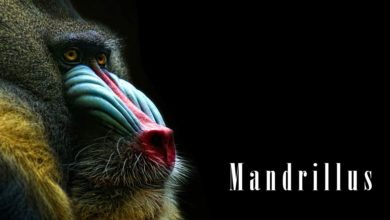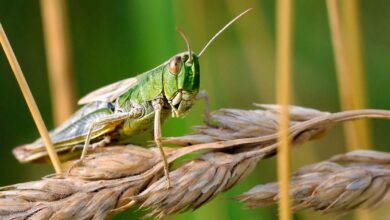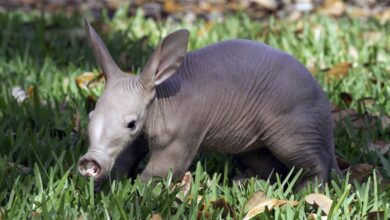Paraceratherium / Indricotherium – the largest land mammal in the world
Indricotherium, Paraceratherium, Baluchitherium, Pristinotherium
Indricotherium (Paraceratherium) is a prehistoric animal that evokes admiration and fascination even today, scaring the enthusiasts of Earth’s prehistoric periods at the same time. It is no surprise considering that it currently is considered the largest land mammal ever to walk on Earth.
The first discovered Indricotherium’s fossils were unhesitatingly associated with a rhinoceros. However research has shown that it is not the only present-day animal that shows many similarities to the Indricotherium. Another such a species is e.g. a giraffe, which can easily eat leaves from the tall trees thanks to its long neck, as well as the prehistoric giant mammal.
Classification
- Kingdom: Animalia
- Phylum: Chordata
- Clade: Synapsida
- Class: Mammalia
- Order: Perissodactyla
- Family: †Hyracodontidae
- Subfamily: †Indricotheriinae
- Genus: †Paraceratherium
- Species:
- †Aceratherium bugtiense – type species
- †Paraceratherium bugtiense
- †Paraceratherium transouralicum
- †Paraceratherium prohorovi
- †Paraceratherium orgosensis
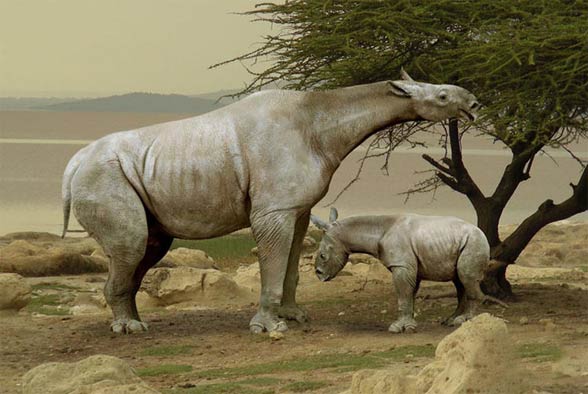
Naming issues
Despite the remains of this enormous mammal being found in the early XX century, they still trigger fierce disputes among paleontologists, who gave it three different names: Indricotherium, Paraceratherium and Baluchitherium. All names are commonly used, but the first two presently fight for primacy.
A watchful observer would notice that the Paraceratherium is the most commonly used name among paleontologists, yet the general public mostly uses Indricotherium.
The naming problem stems in the exceptional similarity of large, prehistoric mammals. Initially the Indricotherium, Paraceratherium and Baluchitherium were considered three different species, however as time went by paleontologist started to wonder if they are not to be treated as one.
Finally the solution was presented in 1989, after the research conducted by S. G. Lucas and J. C. Sobus has shown that both Indricotherium and Paraceratherium are the same species. As the Paraceratherium was described several years earlier than the Indricotherium it has become the official name.
This issue is similar to the one described in the article “Where is the brontosaurus?”, in which we describe the issue of Brontosaurus and Apatosaurus.
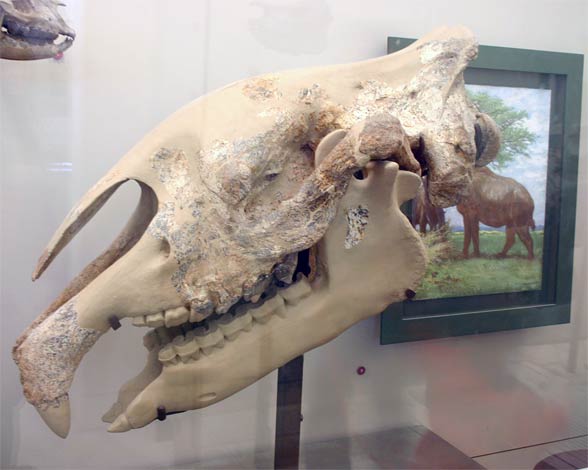
Discovery
Indricotherium fossils were first found in the 1910 in the Balochistan province – presently Pakistani territory. The remains were discovered by an English team of paleontologists, under the lead of sir Clive Forster Cooper from the Cambridge Museum of Zoology.
Range
Indricotherium was endemic to Eurasia and Central Asia in the late Oligocene, about 25 million years ago. It became extinct in the lower Miocene.
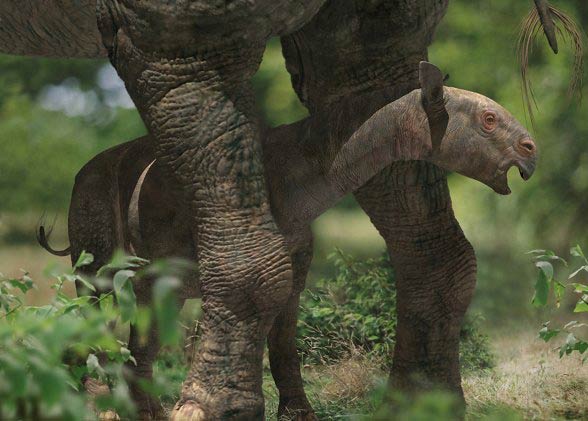
Characteristic features
Indricotherium was a gigantic, hornless rhinoceros, which could be distinguished from its present-day cousins by the lack of horn. It had a very thickset and generally massive torso. The skull of Indricotherium was relatively short, when compared to the rest of its body, as it measured about 135 cm (53.14 in). The head of this enormous mammal was based on a long neck – reaching approximately 2 meters (6ft 6.7in) of length. It allowed the animal to easily acquire food from the tree canopies. Paleontologists suggest that it had a similar position in its ecosystem to a giraffe.
Interestingly, the general shape of Indricotherium’s body shows similarities to okapi. As we all know okapis are highly similar to giraffes.
The most obvious comparison to a rhino is triggered by the striking similarity of those animals’ skulls. Yet with today’s knowledge experts state that it has more in common with a giraffe.
Indricotherium’s legs were muscled, yet more slender than rhino’s legs. Their length allowed it to take longer steps and for a better energy distribution while covering large distances.
Experts suppose that one of the most characteristic Indricotherium’s features were exceptionally well muscled lips, which allowed the animal to spin and manipulate the food before it was consumed. A confirmation of such a theory could be the shape of the frontal part of the skull, which is similar to other animals capable of such actions. Indricotherium also had two pairs of aggrandized incisors.
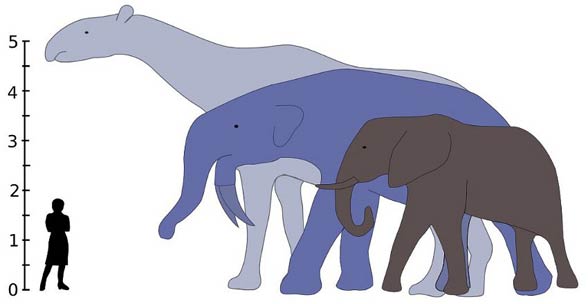
Diet
Despite its substantial size and a quite formidable appearance it is an unusually calm animal – which diet is made of 100% plants. Thanks to its sizeable body and a long neck it could eat from the tree canopies without problems, eating the leaves other animals had no access to.
Life style
Due to their size the adult animals did not have to fear the prehistoric predators. Young ones remained under maternal protection to the point of being self-sufficient.
Conceivably fights between males over dominance occurred occasionally. Paleontologists have concluded that it was the reason for the tougher male skulls.
Experts claim that larger mammals also have a longer lifespan – this means that Indricotherium could live up to 100 years.
It is possible for Indricotherium to be a group animal, yet it is not confirmed by any hard evidence.

Extinction
The most contributing factor causing Indricotherium’s extinction is believed to be a drastic climate change, which took place in the Miocene epoch. These changes were triggered by the tectonic uplift of the Himalayas and caused the disappearing of forest ecosystems, temperature drop and progressive desertification of green areas.
Size
Indricotherium was the largest land mammal ever to live on Earth. Its height at shoulders reached about 5 meters (16 ft) and total body length: 10 meters (33 ft). It weighed between 10 to 20 tons (22,000 lb to 44,000 lb).
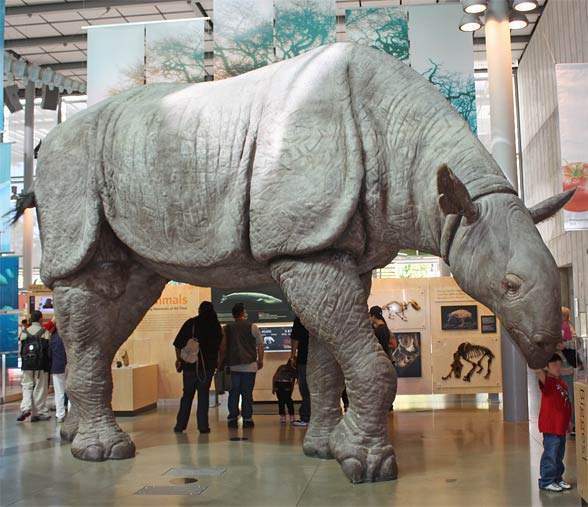
Paraceratherium vs Palaeoloxodon namadicus
According to recent studies, Palaeoloxodon namadicus (5.2 metres (17 ft) tall and 22 tonnes of weight) could probably be a bit larger (heavier) than Paraceratherium, but there is no such certainty as to the evaluation is needed better skeletal material to give us more precise dimensions for these giant animals.
Characteristics / size
Indricotherium/Paraceratherium (Indricotherium transouralicum)
Size
- Body length: about 10 meters (33 ft)
- Height at shoulders: 5 – 5.5 meters (16 – 18 ft)
- Weight: 11 – 16 tons (24250 – 35273 lb)
- Skull length: 135 cm (53 in)
- Neck length: about 200 cm (6.5 ft)
Range
- Eurasia and Central Asia
- Lived 34-23 million years ago
Discovery
- Balochistan province – present-day Pakistan
- Year of discovery: 1910
- Discovered by: Clive Forster Cooper

Indricotherium – interesting facts
- Indricotherium appeared in the third episode of a BBC series called ‘Walking with Beasts’
- The shape of Indricotherium’s body was an inspiration for the creators of ‘Star Wars’. The AT-AT Walkers (All Terrain Armored Transport) design was based on its body.
- The word Indricotherium has a very interesting etymology. It was used to name this animal in recognition of Indrik – a monster from the Russian folklore: the strongest creature on the planet and a forefather of every animal alive.
- The other official name of this animal also has a beastly origin. Paraceratherium literally means ‘a hornless beast’.
- Most modern scientists consider that Baluchitherium, Indricotherium, and Pristinotherium are synonyms of Paraceratherium.

Recommended
- Extinct animals
- Mammoths
- Elasmotherium
- Archaeopteryx
- Sarcosuchus
- Deinosuschus
- Largest eagles Top10
- Largest birds of prey Top10
- Animals & dinosaurs records
- The fastest animals – Top 100
- The fastest birds – Top 10
- The heaviest dinosaurs – Top 10
- The longest dinosaurs. Sauropods Top 10
- The longest predatory dinosaurs. Theropods Top 10
- The heavies predatory dinosaurs Top 10
- The longest and largest ornithopods
- The longest and largest ceratopsians
- The shortest sauropods
- The smallest dinosaurs – Top 10

